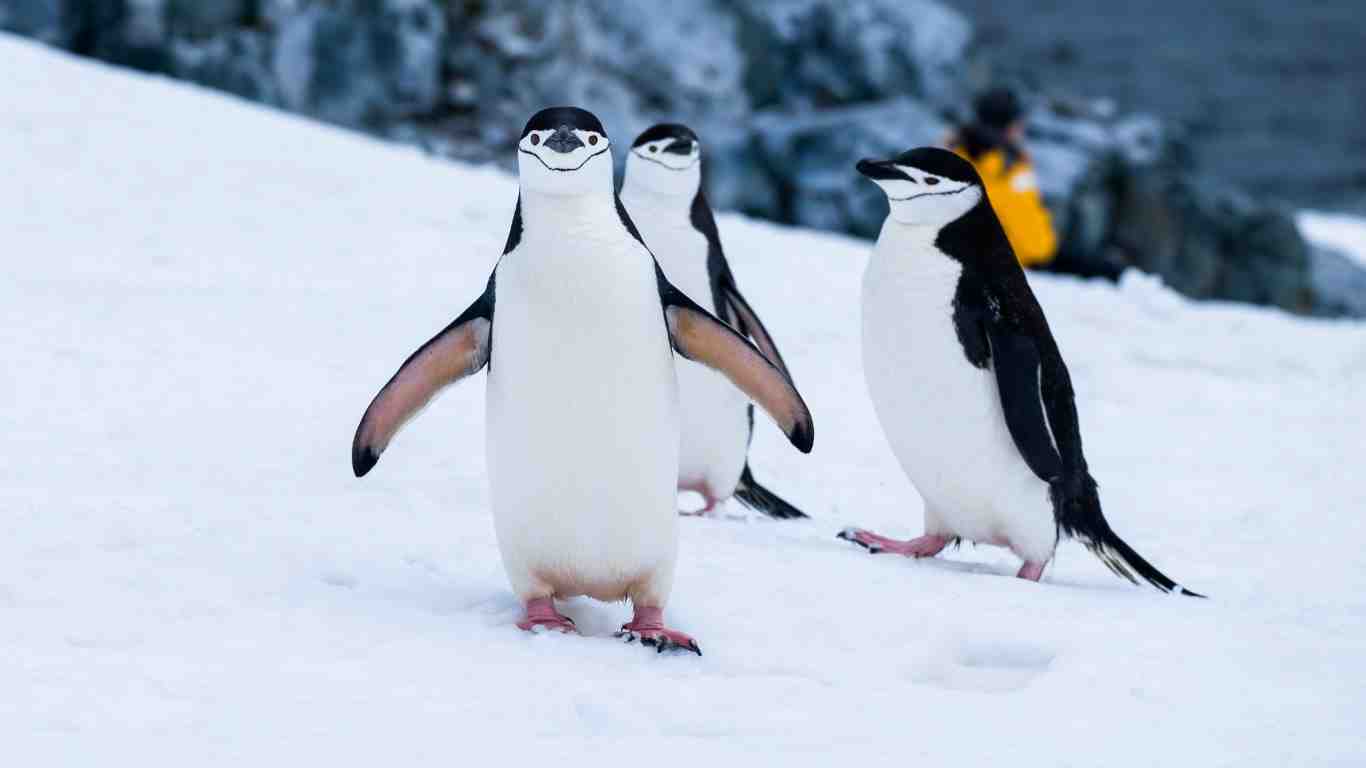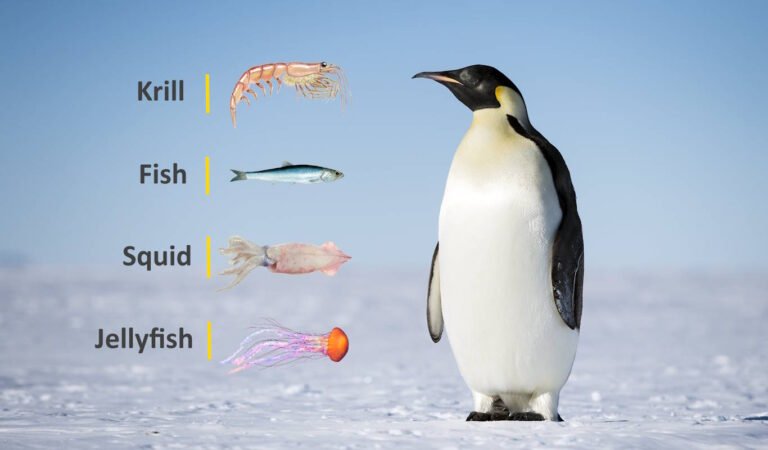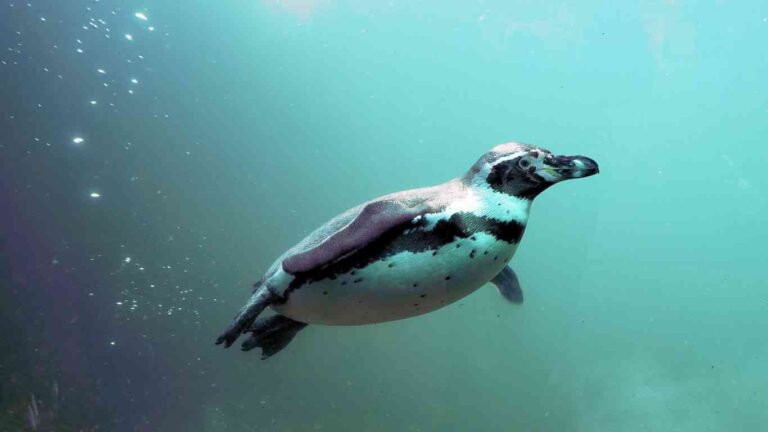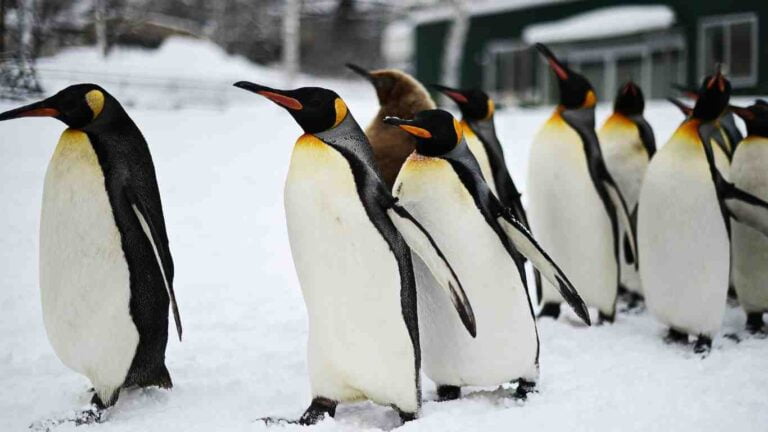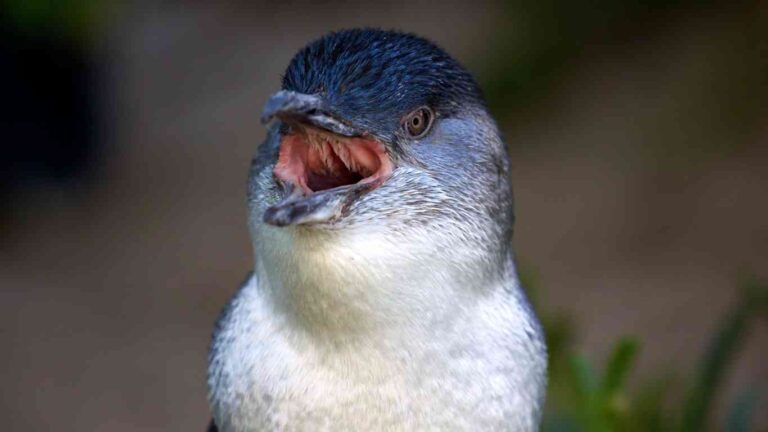Can Penguins Fly? An Evolutionary Perspective
When we think of birds, we typically associate them with the ability to fly. This incredible feat, which allows birds to soar through the sky and navigate over vast distances, is indeed a defining characteristic for most avian species.
However, not all birds take to the skies, and penguins are a prime example of such exceptions.
In this post, we explore the biology, behavior, and adaptations of penguins that enable them to soar under the waves instead of through the air.
Can Penguins Fly?
Penguins are flightless birds that cannot fly in the air. Penguins wings have adapted over millions of years to make them excellent swimmers, capable of reaching speeds of up to 25 miles per hour underwater.
Instead of flying in the air, penguins “fly” through the water using their strong flippers and muscles.
While Penguins are flightless birds, they are highly adept at swimming. Some species do migrate, but they do so by traveling through the seas.
Penguins have evolved with wings that are too small for flight but are ideal for aquatic navigation.
The Question of Flight: Why Penguins Can’t Fly?
Penguins are uniquely adapted birds, and while they may share the basic anatomy of their airborne counterparts, they have evolved in a direction that conspicuously excludes flight through the air.
Physical Adaptations Prevented Penguins From Flying
Let’s consider the physical attributes of penguins that dictate their place in the animal kingdom, other than amongst the fliers:
Penguins Have Wings Shaped Like Flippers for Swimming
Unlike birds that fly, penguins have wings that are stiff, flat, and shaped like flippers.
These are designed not for slicing through air, but for cutting through water with speed and agility.
Penguins’ Solid Bones Enable Deeper Dives for Hunting
Flying birds have hollow or semi-hollow bones to reduce body weight, making it easier to lift off and maintain flight. Penguins, in contrast, have dense, solid bones.
This adaptation serves to reduce buoyancy and allows penguins to dive easier and deeper in their aquatic hunting grounds.
Penguins’ Bodies are Built for Survival in Harsh Environments
The arrangement of penguins bodies is bulky and streamlined to withstand the rigors of cold and pressure at sea depths where few others can survive.
Their body structure is far from the lightweight builds preferred for airborne aviators.
Evolutionary Context of Flightlessness
Over millions of years, penguins evolved from flying birds to the flightless divers we know today. This peculiar transition to flightlessness is best explained by the ecological niche that they occupy:
Penguins Prefer Krill, Squid, and Fish for Food
Penguins feed mainly on discrete marine resources such as krill, squid, and small fish.
Diving was a more efficient strategy for exploiting these abundant food supplies available in the southern hemisphere oceans.
Swimming is a Flightless Advantage for Evading Marine Predators
In water, flightless curves were actually an advantage. Swimming, rather than flying, was necessary to escape from marine predators such as seals and to collect available food.
Penguins’ Aquatic Adaptation to Save Energy for Rich Diets
Maintaining flight is immensely energetically expensive. By forfeiting flight and adapting to aquatic habitats, penguins conserved the energy needed for their calorie-rich diets.
Habitats and Behaviors That Caused Penguins to Be Flightless
The behavior and habitats of penguins further underscore their aquatic nature:
Penguin Species Prefer Ice and Ocean Habitat
Most penguin species inhabit the Southern Hemisphere, where they’re mostly found on ice and in the oceans, rather than in sky/domains.
Penguins Nesting in Colonies Depend on Seafood for Sustenance
Penguins are social creatures, nesting in large colonies on land but sourcing their sustenance from seafood they catch during dives.
The Evolutionary Trade-Off and How Penguins Fly Underwater?
Penguins are a remarkable example of evolutionary trade-off where the loss of flight has been offset by proficiency in another area, aquatic locomotion.
Their un-flightworthy features have been perfectly molded by time and nature for their unique lifestyle, one that takes place predominantly at sea.
Although it may seem a disadvantage to some, this diversion from flight has actually tailored the penguin to thrive in environs where few can compete.
Surrounded by frigid waters and frozen landscapes, their distinct inability to fly is the exact trademark for their survival and success.
As we come to understand the evolutionary pathways and unique adaptations creatures like the penguin have undergone, it presents incredible insights into the diversity and ingenuity of life on Earth.
Penguins cannot fly through the air, but when you watch them “flying” through the water with ease and grace, it’s clear they’ve mastered a different kind of sky, the vast oceanic depths, where they are indeed as free and capable as any bird soaring on the wind above.
(Featured image by Derek Oyen on Unsplash)

